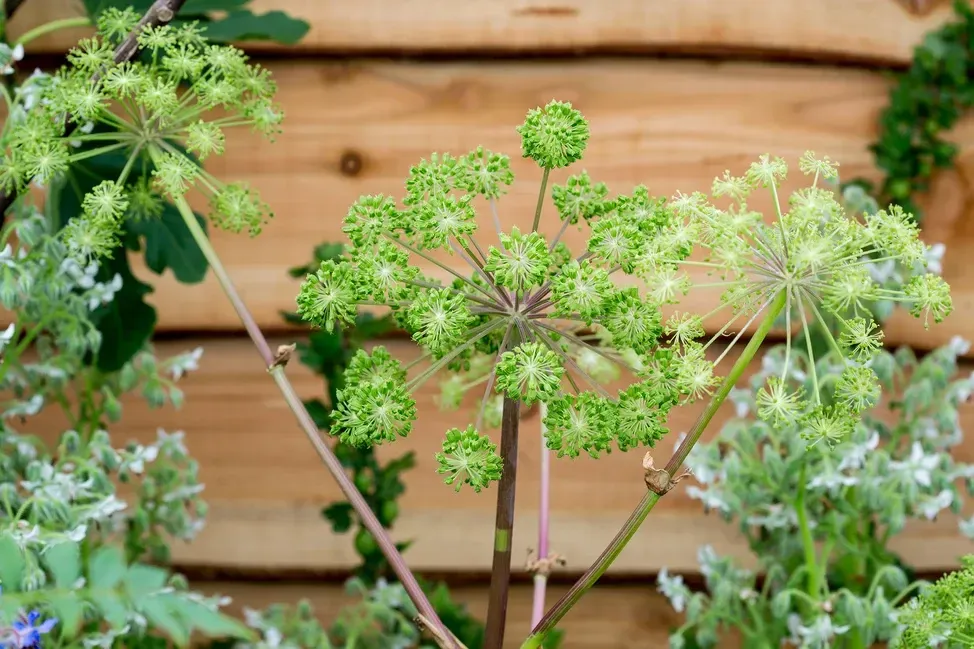Angelica
KEY INFORMATION
Height: to 200cm
Spread: to 40cm
Biennial
Moist / Semi-shade
Germination: 10 - 15 days
VARIETIES AVAILABLE FROM COLLIE FLOWERS
Angelica archangelica
SOWING & GROWING SCHEDULE
Sow Indoors: September - October, March - April
Sow Outdoors: September - October, March - April
Plant Out: May - June
Blooms: June - August

Most ornamental angelicas are tall biennials with huge, domed umbelliferous flowerheads followed by delicate seed pods. Angelica species include wild angelica (Angelica sylvestris), the tall Angelica gigas, Portuguese angelica (Angelica pachycarpa) and Norwegian or garden angelica (Angelica archangelica). It’s not advisable to forage for wild angelica as it can be confused with several toxic species. Collie Flowers stocks and gives advice on the growing of Angelica archangelica, which has ribbed, hollow stems, flushed pink and are traditionally candied for use in baking. Angelica leaves are green and deeply divided. All parts of angelica plants are highly aromatic and they have traditionally been used for medicinal as well as culinary purposes. It’s good for including in wildlife planting as the flowers are attractive to pollinators and the seeds are eaten by birds.
Sow Angelica seeds direct outdoors, or in mobules under cover in March, April, September or October. Sow onto the surface of the soil or compost as the seeds need light to germinate. Keep the soil damp but not wet and do not exclude light. For indoor sown seeds, place in a propagator or seal the seed tray inside a polythene bag until after germination. When seedlings are large enough to handle, transplant and grow them on in cooler conditions until large enough to plant outdoors. Plant angelica into soil with plenty of organic matter and water well until established. Ideally, plant angelica out as young plants in spring. They have deep tap roots and suffer if moved.
Angelica needs little care once it’s established. It may require watering in dry periods, and pot-grown angelicas will need regular watering. Deadhead after flowering to encourage plants to come back the following year. Alternatively, cut back the stems and dig up the plant in the autumn of its second year, dividing the roots with a sharp knife. Repot divisions into compost or directly into the soil where they are to grow.
TOP TIP
If you want to make your own candied angelica, pick the tender young stems in spring, before June. Take care as the sap from angelica, as with all members of this genus, can be an irritant and burn the skin in sunlight.
